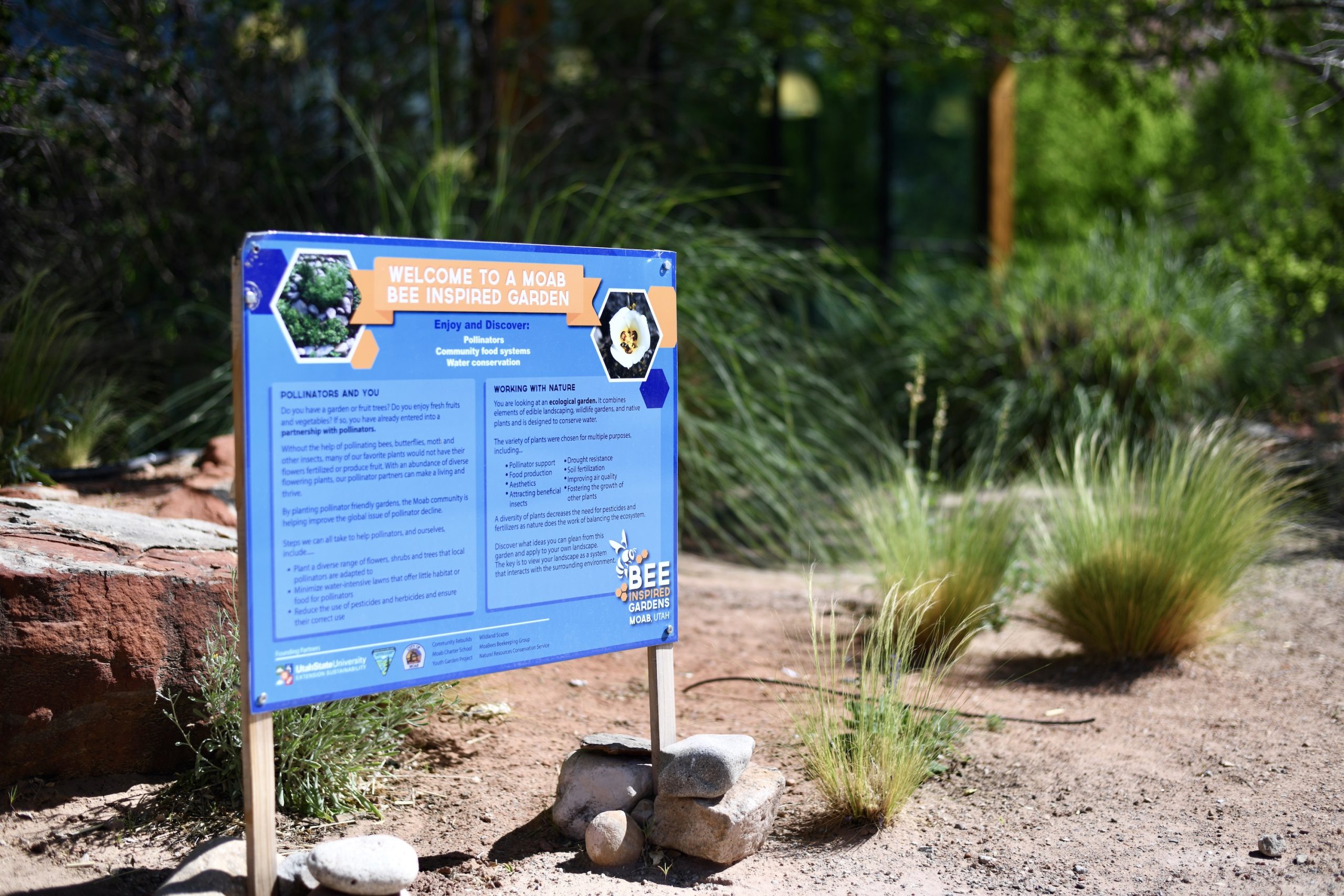Some information may be outdated.
There are more bee species in the southern half of Utah than the entire region east of the Mississippi, according to Roslynn McCann, an associate professor and sustainable communities specialist at the University of Utah, and founder of the Moab Bee Inspired Gardens project.
The city of Moab is home to over 500 native bee species, McCann said.
“I grew a strong passion and motivation to further education of healthy pollinator habitat and spaces that grow perennial edible food spaces,” McCann said. It was this passion that drove her to start the Bee Inspired Gardens project in 2013, which helps Moab residents and businesses transform their landscapes into bee-friendly spaces.
“Our ultimate goal was to really create an ethic that people would be able to observe coming into Moab, and also that locals would be able to recognize: that Moab is a place that cares about ecological design and preserving pollinator habitat,” she said. According to the Utah Pollinator Pursuit, an insect conservation group, pollinator species are in decline, threatened by “the use of pesticides, warming climate, and a lack of floral resources and nesting sites.”
To be officially certified as a Moab Bee Garden, a garden must have at least three different flowering plants in bloom in the spring, summer, and fall. Approved gardens receive a small lawn sign.

As the years went on, the project gained momentum. McCann made partnerships with local stakeholders such as Jeff Adams at TerraSophia LLC, Claire Core at the Resiliency Hub, Kara Dohrenwend at Wildland Scapes Nursery, and Emily Roberson at the Youth Garden Project. She got 13 local entities to transform their landscapes into official bee gardens, including the Grand County Library, Canyonlands Field Institute, the Moab Charter School, and the Aarchway Inn. The project successfully registered dozens of residential gardens.
But then the pandemic hit, and McCann had a baby. The project’s partners were trying to stay afloat, and McCann was juggling being a working mom. The project ground to a halt.
“That’s kind of the situation we’re still in,” McCann said. A few months ago, things started picking up speed a bit—McCann was talking to former Moab City Sustainability Director, Mila Dunbar-Irwin, about integrating the work that the bee gardens project did into the city’s landscaping ordinances. But then Dunbar-Irwin left her position in mid-April.
McCann hopes the project will be able to start up again soon, she said, especially as pollinator populations continue to fall.
“I think that the issues working against pollinators are societal in nature,” McCann said, naming excessive paving and traditional lawns as the major issues. Mono-planted lawns—swaths of lush, green grass—are pesticide, fertilizer, and water-dependent, McCann said, meaning they’re not conducive to healthy pollinator habitats or water conservation practices.
“We’re flipping the paradigm of ‘okay, I’m building a house, let me put in my green lawn,’” McCann said. “Why would we do that, especially in Moab, when there are so many other ways to design a landscape that’s waterwise, nature-friendly, and has a whole array of ecosystem services?”
Jeff Adams, the founder of the Moab ecological design consulting and landscaping company TerraSophia LLC and partner of the project, also said that one of the biggest challenges of landscaping in the desert is pushing through the societal pressure to have a perfect lawn—and instead, to have a yard built for the environment.
“What one person sees as an awesome, somewhat-feral pollinator garden, somebody else is going to see as a weed patch,” Adams said.
By building bee gardens in public spaces, Adams said he hopes native landscapes become more normalized, and that people realize bee gardens can happen anywhere, at any scale.
“Part of the beauty of it is that even if you’re just planting a few flowers, you’re helping,” he said. “…The project brings people together so that we can all help each other do these landscapes because they benefit the broader community.”
Moab locals can register their gardens as official Bee Gardens on www.beeinspired.usu.edu, which also lists resources for bee-friendly and Utah native plants.
“The time is ripe,” McCann said. “I think we’re all interested and ready to take the reins and start working again on these efforts.”
Appreciate the coverage? Help keep local news alive.
Chip in to support the Moab Sun News.





